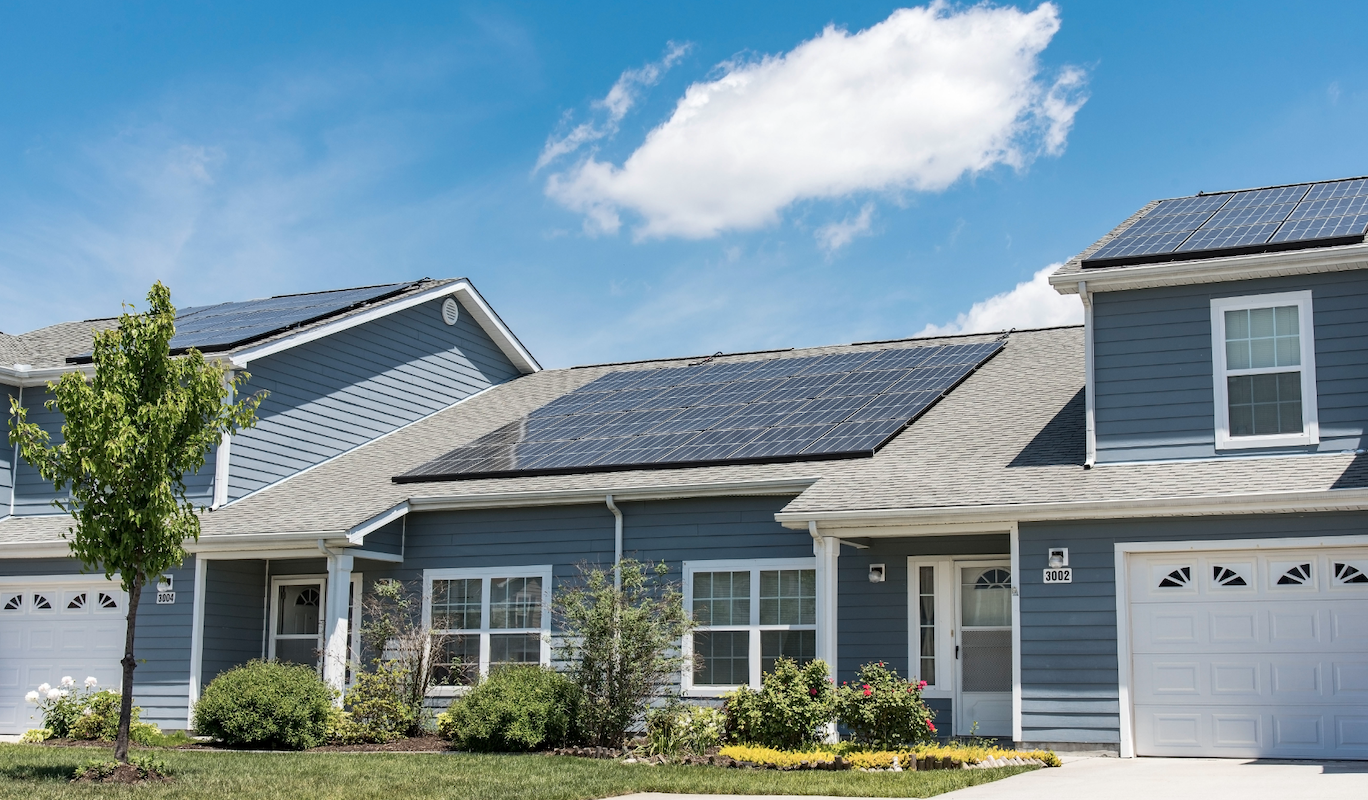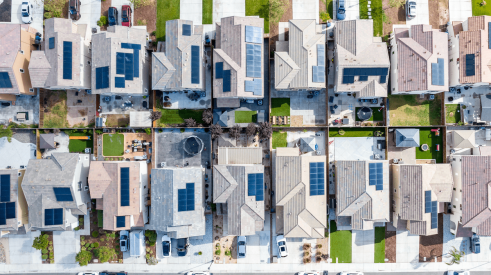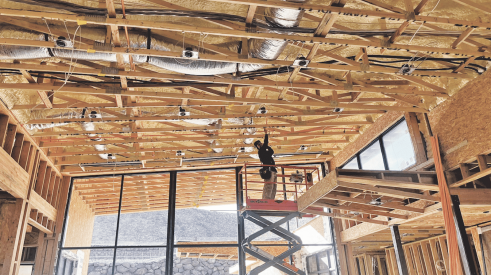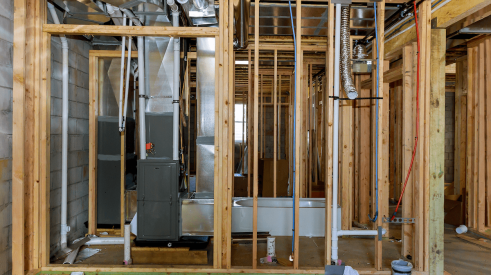This is a longer version of the interview with Aaron Nitzkin that appeared in the April 2020 issue of Pro Builder.
Effective this year, the cities of Berkeley and Windsor, Calif., banned natural gas hookups for most new-construction homes. Both municipalities were subsequently sued. San Francisco is among 50 California cities and counties, three Massachusetts towns, and Seattle that have enacted or are considering codes calling for all-electric heating and cooling in new construction and/or renovations to reduce fossil fuel use and greenhouse gas emissions. The Green Reach Code ordinance for Davis, Calif., has the same goals, but encourages all-electric for homes by imposing less-strict requirements than for gas-connected buildings. Aaron Nitzkin, as chairman of the city’s advisory task force, had a courtside view of how Davis came to use the carrot rather than the stick.
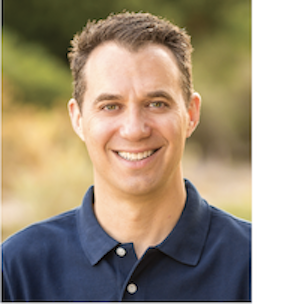
EVP of Solar
Citadel Roofing and Solar
PRO BUILDER: What is the city of Davis doing regarding codes for all-electric homes?
Aaron Nitzkin: In the past several months, we’ve seen a lot of momentum across California, with cities introducing reach codes [ordinances with stricter energy-efficiency and emissions standards than the state’s Title 24 standard]. The idea is to curtail natural gas use.
Today, electric heat isn’t common. People are used to gas. When you introduce a ban without any forewarning, you’ll get some people freaking out. Now that solar is so cost-effective, these cities are able to meet the requirements to introduce a reach code that makes an all-electric home cost-effective. You now have electricity able to drive heating, cooling, and cooking in very high-quality, cost-effective ways, where you historically haven’t been able to do so.
Davis wanted to see builders building all-electric homes, but the city didn’t want to mandate it. So they’re saying that if you want to build a mixed-fuel home, you can, but the code is going to be more strict.
For instance, you’ll have to improve energy efficiency and maybe use better windows. You might have to put in energy storage and prewire the home for all of the electrical appliances down the road. Or, if you just do all-electric now, then you don’t have to put in all of those extra things. Basically, if you want to build a natural-gas home, you can, but you have to add more to it. It’s a way to transition them over.
PB: How has solar changed the game?
AN: It’s fascinating to recall when solar was new and everyone was rebelling against it because it was too expensive. If California’s solar mandate had been implemented 10 years ago, there would have been yelling and screaming. Now there’s no yelling and screaming because it’s been transitioned in, and solar has been incentivized.
PB: What are examples of extras that would be required for a mixed-fuel house?
AN: Two that I read about are energy storage and better windows. It all goes back to the EDR [Energy Design Rating], so you have to get 9.5 points lower than what is normally required. (Editors note: EDR is similar to Resnet’s Home Energy Rating System [HERS] Index, where greater energy efficiency results in a lower score.)
PB: What was your role?
AN: There’s a solar task force made up of representatives from the city, from Cool Davis—a nonprofit organization that promotes sustainability—and local stakeholders. I’m part of the local stakeholders group and chairman of the task force.
We helped to pioneer a lot of things. In 2016 we recommended a solar target to the city, so we launched a mission that doubled the amount of solar in Davis. The goal is that, by the end of this year, Davis has 4,500 installations—almost half of all the owner-occupied buildings in the city. That’s amazing penetration, but the city has been implementing initiatives for over a decade, such as setting carbon-neutrality goals.
Last year the city passed an ordinance that mandates solar on commercial buildings and high-rise multifamily. The city is always thinking ahead and pushing the envelope. I personally wasn’t involved in reach code discussions, but our city council and building department are trying to determine what should be done to move the needle.
PB: How did the notion for this incentive approach come about?
AN: I’ve been working with builders for over 16 years, mostly dealing with the solar team, and I really understand the builder mentality. Any change in the building code is really disruptive to the home builder.
A builder creates a process, and they like it to run smoothly. Whenever you have a disruption, there is a cost. Builders are constantly having to learn new codes, figuring out the options to meet those codes, figuring out what to select and what is the cost in terms of labor, training, and material, and factoring all that into how they price their homes. Then they have to have quality control and create new work processes. Builders just don’t like mandates, and they want as much notice as possible so they can fully integrate changes into their workflow.
One thing I like about the Davis code is it’s not going to be a shock to builders' systems. It will likely be disruptive, but it gives them a chance to digest it and make adjustments.
PB: Where did this approach originate from?
AN: The city of Davis is always progressive and is thinking ahead. I think when they were trying to figure this out last year and they saw what Berkeley tried to do, they said this is not an approach that makes sense to us. So they tried figuring out an approach that was conducive not just to their goals, but to the community and the builders. The goal is not to have the builders be the opposition; the goal is to have a good, healthy relationship between the city and the building community.
They were trying to find a balance and the builders knew the city was trying to make it easier for them to integrate these new code options to make it easily achievable. The city wants compliance, it doesn’t want to deal with noncompliance and rejected plans because that also is very disruptive.
"Any change in the building code is really disruptive to the home builder. ... One thing I like about the Davis code is it’s not going to be a shock to builders' systems. It will likely be disruptive, but it gives them a chance to digest it and make adjustments."
PB: Builders knew the reach codes were coming since late last year. Have they had sufficient time to adjust/change/ prepare?
AN: A lot of cities passed different kinds of reach codes in September 2019. The way it works is a city can pass the code, then because it’s a building code, it has to be approved by the California Energy Commission. The Commission generally has two requirements: first, the reach codes have to meet or exceed existing building code Title 24, and second, there has to be evidence and documentation supporting the cost effectiveness of this new code.
As long as the new code does that, the Energy Commission will approve it. When a reach code gets approved by the Commission, it immediately goes into law. This reach code was approved last September, so all of the builders that were paying attention knew that in January 2020 this is going to become law. That’s just four months. Davis isn't exactly bursting at the seams with master plans and subdivisions like other cities, but the reach code is a meaningful change builders need to be aware of.
PB: Is there any feedback from builders yet?
AN: It’s probably a bit too early to tell. I haven't seen feedback regarding this reach code in Davis yet. I think builders are very pragmatic. They’re not going to sue the city of Davis, or any city for that matter, because that can result in terrible press for them. So the good builders accept the new code and will start incorporating it into their workflow.
I don’t think there’s resistance. It all depends on how it's done. If a city tries to bypass the traditional process, like Berkeley did, you will have stakeholders raising their concerns.
PB: What is the availability of skilled solar installers? Do you see a problem ahead for builders trying to comply with reach codes?
AN: I believe it's going to be a real problem. There's a lot of competition for quality labor. There's a shortage of qualified trades in construction across the country, and in California it's pronounced. At my company, we use our own crews and we’re all over the state, so we’re feeling pretty good. But we’re finding a lot of companies going after the home builder market; they subcontract the labor, and a lot of them fight for the labor, and there’s only so much that goes around. When they’re all using the same subs and all of a sudden they need something in three weeks, the sub might say, "I’m already helping someone else now, so I can’t help you."
I do think you will see this labor issue become more pronounced because all new California homes are required to have solar, and I’m not sure the trade base is prepared for that.
Competitors try to steal other companies' crews all the time. And while 2020 will be rough, I think 2021 will be worse. You’re going to see labor be the competitive driver for execution. We've always believed you want your own labor because you can better control your quality, but you also control your own destiny and you can manage your scheduling more effectively. If you’re outsourcing that, you’re at the mercy of that contractor and the marketplace. In a market that's going to grow as fast as solar will in the new construction space over the next 24 months, it’s going to get pretty crazy.
Access a PDF of this article in Pro Builder's April 2020 digital edition
Advertisement
Related Stories
Sustainability
Mention of Eco-Friendly Home Features Is on the Rise in Sales Listings
Home listing descriptions using eco-friendly terms have been rising over the past five years in line with growing consumer interest in the environment and energy efficiency
Construction
5 Steps to Cracking the Code for a High-Performance Home
As a model of energy savings, water conservation, indoor comfort and health, and use of on-site renewable energy, The New American Home 2024 offers valuable lessons
Sustainability
Which Green Building Practices Are Home Builders Using Most?
A recent report reveals which green-building practices are most popular among single-family home builders and remodelers


